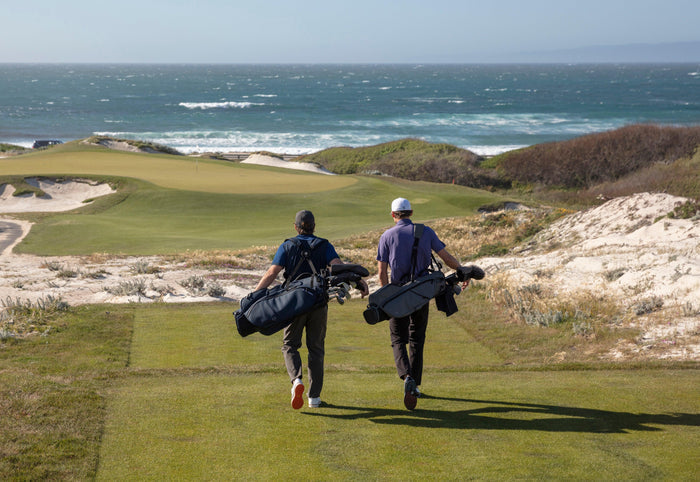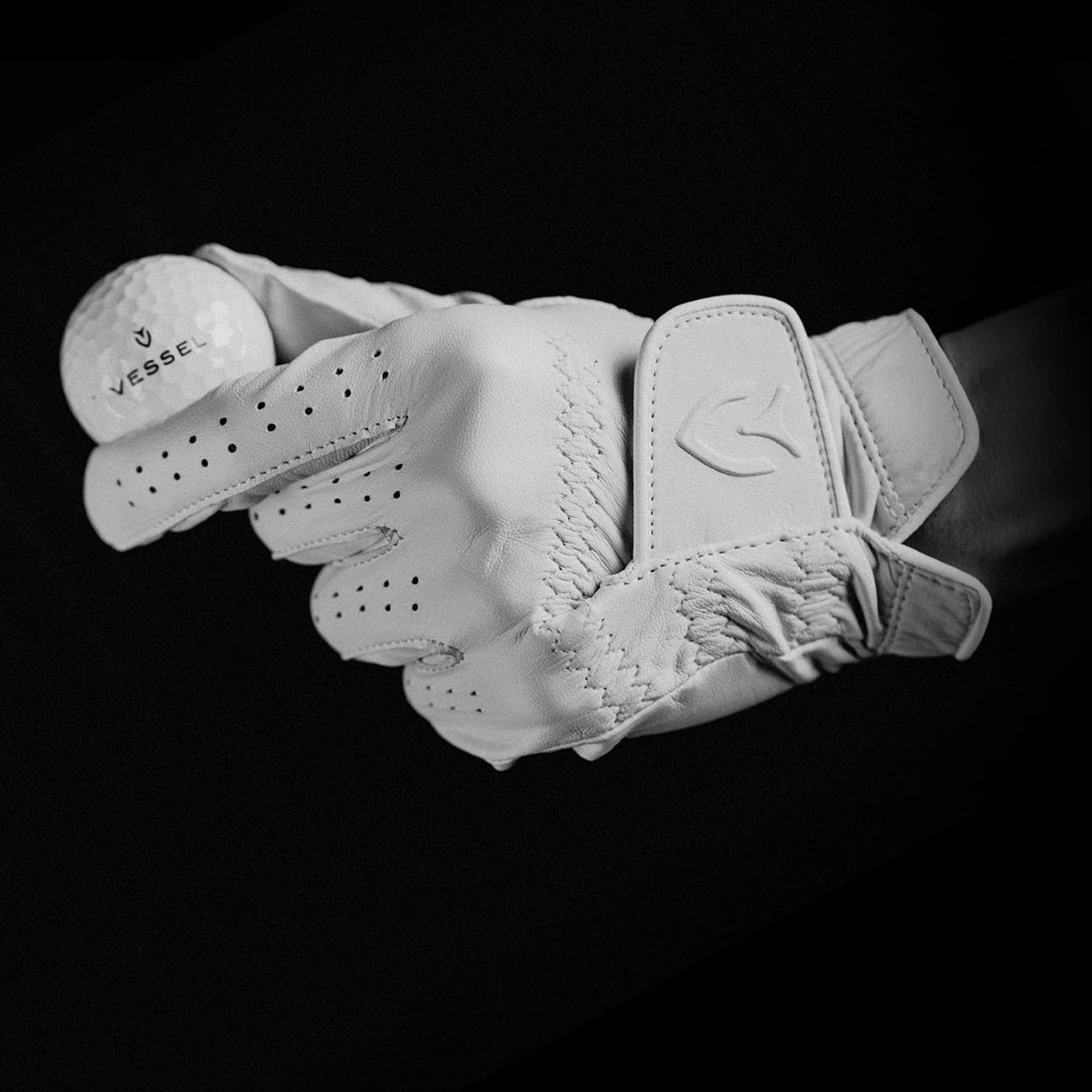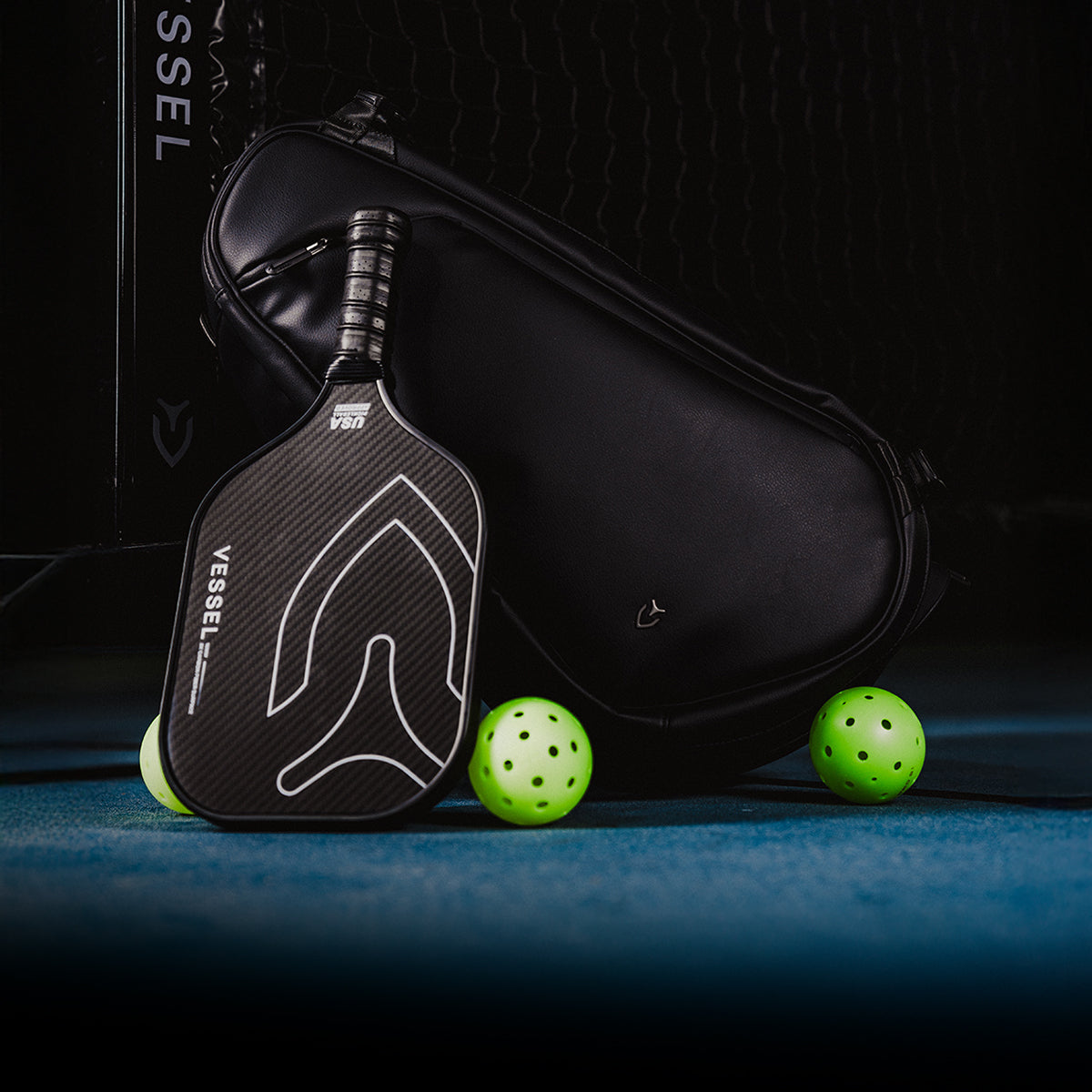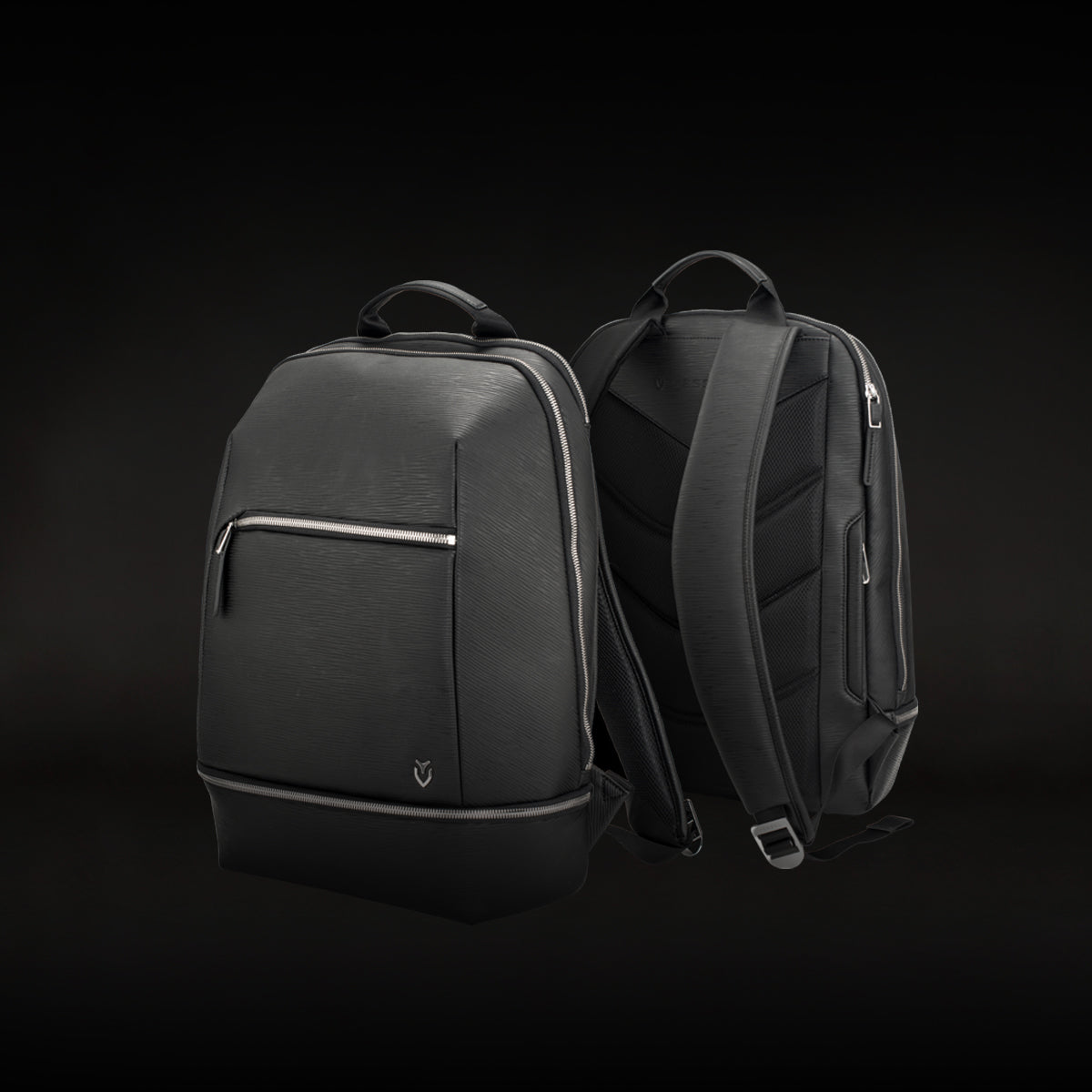

You'll find five main types of grass on golf courses, and each one's picked for specific reasons. Bermuda grass dominates hot southern courses with its drought-resistant roots, while bentgrass creates those lightning-fast putting greens up north. Zoysia grass handles temperature swings like a champ, growing super dense. Poa annua covers West Coast greens despite being high-maintenance, and ryegrass saves winter fairways through overseeding. Each type affects how your ball rolls, bounces, and sits there's actually fascinating science behind why courses choose their grass.
Table of Contents
Bermuda Grass: The Heat-Loving Champion of Southern Golf Courses
When you're walking across a golf course in Florida or Texas on a scorching summer day, there's a good chance you're stepping on Bermuda grass, the tough-as-nails champion of hot-weather turf. This African native thrives where other grasses would surrender, thanks to its deep roots that dig down for water during droughts. You'll find different varieties across the course: hybrid types like Tifway on the putting greens, where you need that carpet-smooth surface, and common Bermuda on the fairways, where it takes a beating from golf carts and recovers like nothing happened. The reality is that Bermuda spreads through stolons and rhizomes, which are essentially above-ground and underground runners that help it fill in bare spots quickly. It's practically indestructible! What's more, this resilient grass can be mowed as low as 0.5 inches, making it perfect for those lightning-fast putting greens where every millimeter affects your ball roll. Plus, its natural salt tolerance makes it the perfect choice for those stunning coastal golf courses where ocean spray would kill most other grasses.
Bentgrass: The Cool-Season Favorite for Premium Putting Greens
While Bermuda grass rules the hot southern courses, bentgrass takes over when you head north into cooler climates, and there's nothing quite like the feeling of putting on a pristine bentgrass green. You'll find this grass creates that emerald-green carpet you see on TV during major championships. Here's what makes it special: bentgrass can be mowed incredibly low, down to just 1/8 inch, which gives you those lightning-fast putting speeds golfers dream about. However, this premium playing surface requires regular fertilization and watering to maintain its dense, healthy appearance.
The most popular type is Creeping Bentgrass, which spreads through above-ground runners called stolons. Think of them as tiny stems that creep along the surface, filling in any bare spots. This dense growth keeps weeds out and creates a smooth, uniform surface for applying. Unlike Bermuda greens, where grain dramatically affects break, bentgrass greens require you to play the slope rather than worrying about grain direction.
In colder climates, you'll see cool-season grasses like bentgrass and ryegrass taking center stage for their freeze resistance. Meanwhile, warm regions favor heat-loving varieties such as bermudagrass and zoysiagrass. Water-scarce areas are increasingly choosing efficient grasses like seashore paspalum. Tall fescue has gained significant traction due to its superior drought resistance and cold tolerance.
Zoysia Grass: The Resilient All-Weather Performer

Between bentgrass up north and Bermuda down south, there's a grass that doesn't pick sides. Zoysia grass thrives almost anywhere you plant it. This tough-as-nails grass handles both scorching summers and surprisingly cold winters, making it perfect for those tricky shift zones where other grasses struggle. The grass blades grow straight up at a 90-degree angle from the rhizomes, creating a consistent surface without the grain issues common in Bermuda grass. While the tightly packed blades can create a sticky feeling that affects bump-and-run shots around the greens, the grass provides excellent ball support for full shots.
Here's what makes Zoysia special: it grows slowly but steadily, creating a dense carpet that feels like you're walking on a firm mattress. You'll love how it bounces back from heavy traffic even after a busy tournament weekend! The deep roots dig down for water, so you won't need to irrigate as often. Popular varieties like Zeon and Stadium Zoysia offer lively green colors that stay gorgeous with minimal fertilizer. Plus, the tight growth naturally crowds out weeds, saving you time and money on maintenance.
Poa Annua Grass: The Controversial West Coast Staple
If you've ever played golf on the West Coast, you've probably putted on Poa annua without even knowing it, and you might've cursed at it too! This controversial grass, also known as annual bluegrass, creates those splotchy, lime-green patches that you'll notice on putting greens. The reality is: superintendents either love it or hate it.
Poa annua's got hundreds of different biotypes, meaning each course basically has its own unique strain. That's why you'll notice uneven textures and bumpy surfaces. Different varieties grow at varying rates, resulting in an inconsistent putting experience. The grass produces seed heads throughout the day, which can make the putting surface even more unpredictable as the round progresses. While it thrives in cool, moist climates and can handle super-short mowing for tournament speeds, it's also high-maintenance. Its shallow roots need constant watering, and it's prone to diseases and grub damage. You'll find this grass at some of golf's most prestigious venues like Pebble Beach, Oakmont, and Riviera Country Club.
Perennial Ryegrass: The Versatile Cool-Season Overseeder
The workhorse of golf course overseeding, perennial ryegrass is that reliable friend who shows up exactly when you need them, especially when your warm-season grass goes dormant for winter. You'll see this grass germinate in just 5-7 days, which means superintendents can convert brown fairways into green carpets remarkably fast.
Here's what makes it special: perennial ryegrass thrives in cool weather and maintains its deep green color throughout the winter. It's perfect for northern courses and adjustment zones, where temperatures stay moderate. The grass handles foot and cart traffic well, making it ideal for busy fairways and tees. Golf courses typically apply 450-750 lbs per acre when overseeding to ensure proper coverage and density. You can mow it between 1 and 2 inches for ideal density. The catch? It grows in bunches rather than spreading, so damaged spots need reseeding instead of self-repair. However, newer varieties developed since 2000 offer gray leaf spot resistance, addressing a fungal disease that historically caused significant turf loss in transition-zone courses.
Paspalum Grass: The Salt-Tolerant Coastal Course Solution
When you're managing a golf course near the ocean, standard grass varieties throw in the towel faster than you can say "salt spray," but paspalum grass actually thrives in these harsh conditions. This extraordinary turfgrass can handle saltwater irrigation that would kill bermudagrass or zoysia. The fact of the matter is: paspalum actually excretes excess salt through its roots, which is pretty much unheard of in the turf world!
You'll love its dark blue-green color and fine texture that stays gorgeous even in shade. It needs less water and fertilizer than bermudagrass, saving you money and effort. Plus, it recovers quickly from divots thanks to its rhizomes and stolons, those underground and above-ground runners that help grass spread. Many coastal courses are switching to paspalum for good reason.
Frequently Asked Questions
How Much Does It Cost to Maintain Different Grass Types Annually?
You'll spend vastly different amounts maintaining different golf course grasses annually. Bentgrass requires the highest investment in terms of frequent mowing, watering, and chemical treatments, which can really add up! Bermuda grass incurs moderate costs due to its regular mowing needs. Buffalo grass and Bahia grass, however, save you serious money with minimal water and mowing requirements. Golf rough typically costs $7,139 per acre yearly, but switching to native grasses cuts that considerably.
Which Grass Type Provides the Fastest Ball Roll Speed?
You'll find bentgrass provides the fastest ball roll speeds on golf courses. It's fine, dense blades create an incredibly smooth surface that reduces friction. Think of it like rolling a ball on velvet versus rolling it on carpet. When mowed short, bentgrass greens consistently deliver the quickest speeds. Hybrid bermudagrass comes in second, especially when rolled and maintained properly. The fact of the matter is: bentgrass's upright growth pattern naturally creates less resistance, making your putts roll 20-30% farther than on other grasses.
Can Different Grass Types Be Mixed on the Same Hole?
Yes, you'll often find different grass types mixed on the same hole! Golf courses commonly use Bermuda or Zoysia for fairways and tees, then switch to Bentgrass or Poa Annua on greens. Here's why: each grass excels in specific areas. Bentgrass handles super-low mowing heights on greens, while Zoysia's deep roots make it perfect for drought-prone fairways. Some courses even overseed warm-season grasses with Ryegrass during cooler months to maintain year-round playability.
How Long Does It Take to Establish Each Grass Type From Seed?
You'll see ryegrass sprouting in just 5-10 days and fully established within 4-6 weeks! Bermuda takes 7-14 days to germinate, needing 3-4 months for complete establishment. Bentgrass germinates in 10-14 days but requires 6-9 months total. The point is about Zoysia it's the slowest, taking 14-21 days to sprout and up to a year to establish. Poa annua pops up quickly, within 5-10 days, establishes in 2-3 months.
Conclusion
Now you know more than the average golfer about types of golf course grass! Each type has its own personality. Bermuda loves the heat, bentgrass prefers cooler weather, and paspalum doesn't mind salty ocean spray. Next time you're out on the course, take a closer look at what's under your feet. You'll notice how the grass changes from tee to green, and you'll understand why your local course chose its specific grass type. Pretty cool, right?







